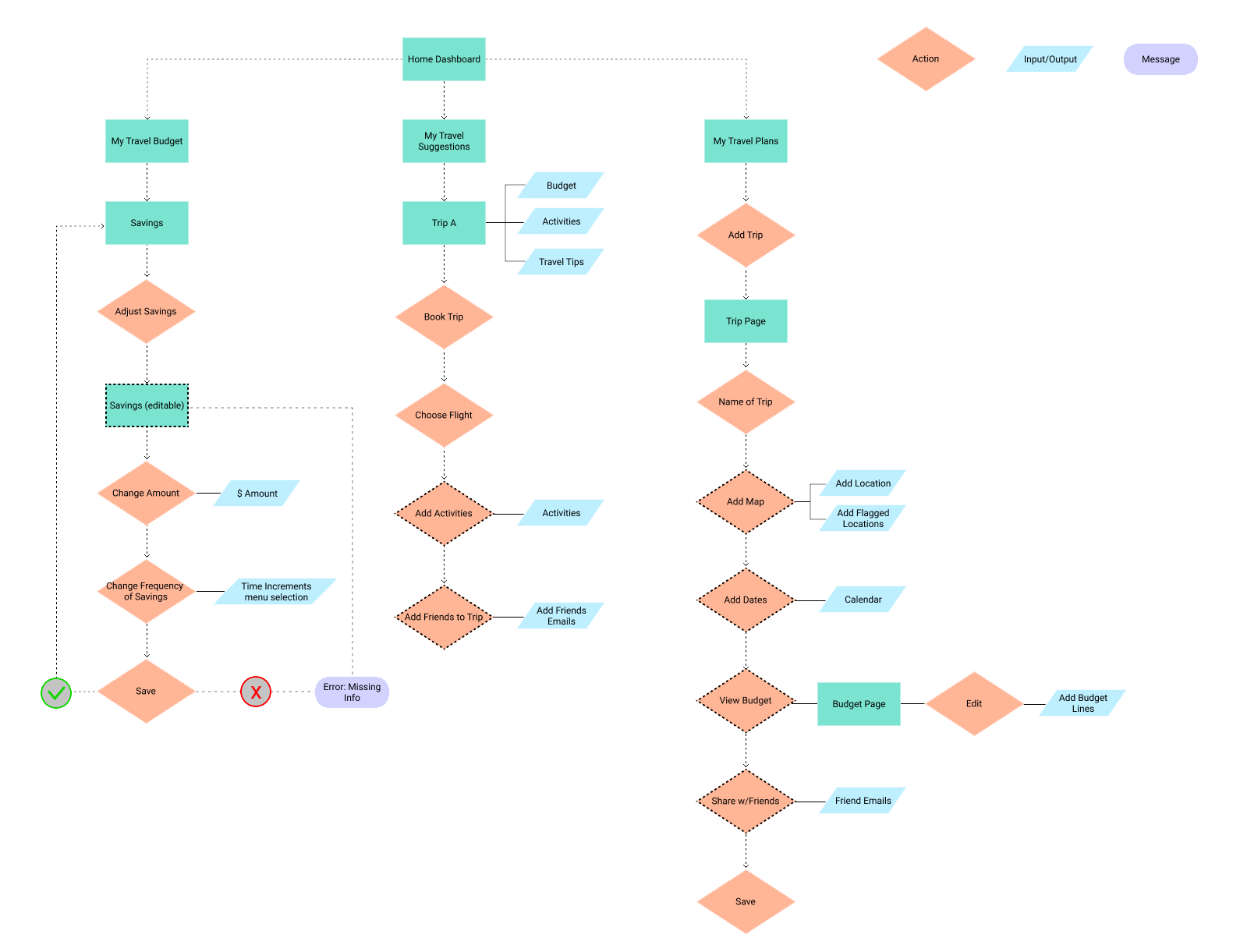
VIA Travel
Product design, mobile iOS
The Problem
The general millennial population is known to travel the most for less, however, they’re also the generation most likely to go into debt after travel.
While it’s true that the majority of Americans budget and specifically budget for travel, the current economic situation has lead to millennials averaging less than $10,000 in savings. Millennials as a user provided a unique opportunity to provide clearer financial stability while also providing travel options.
While it’s true that the majority of Americans budget and specifically budget for travel, the current economic situation has lead to millennials averaging less than $10,000 in savings. Millennials as a user provided a unique opportunity to provide clearer financial stability while also providing travel options.
Sources:
https://www.condorferries.co.uk/travel-statistics-by-age-group
https://blog.accessdevelopment.com/tourism-and-travel-statistics-the-ultimate-collection
https://www.condorferries.co.uk/travel-statistics-by-age-group
https://blog.accessdevelopment.com/tourism-and-travel-statistics-the-ultimate-collection
MILLENNIALS ARE THE MOST LIKELY TO GO INTO DEBT FOR TRAVEL
47% OF MILLENNIALS SAY COST IS A BARRIER FOR WHY THEY WON’T TRAVEL
MILLENNIALS ARE MORE LIKELY TO USE ALL OF THEIR VACATION TIME
65.3% OF AMERICANS SAY THAT TRAVEL IS A BUDGET PRIORITY FOR THEM









